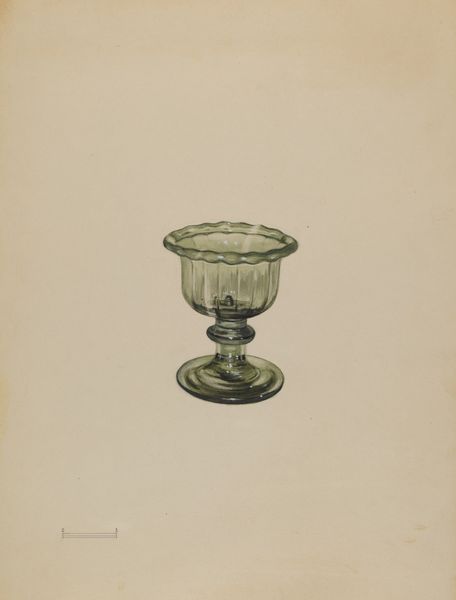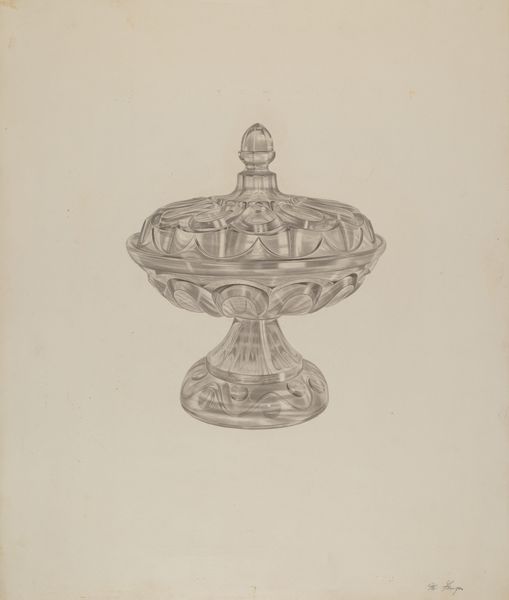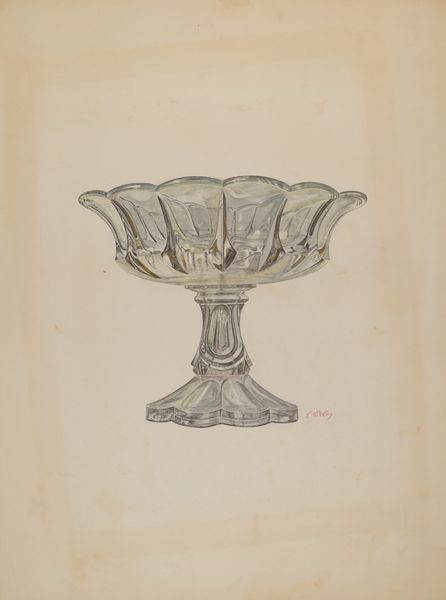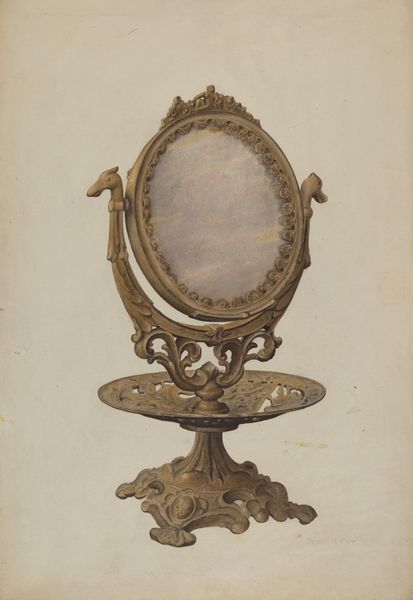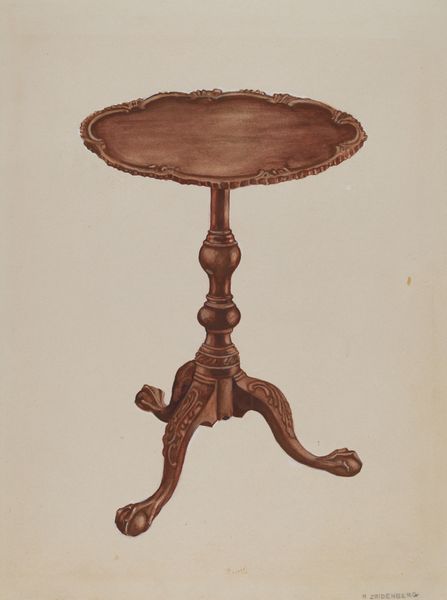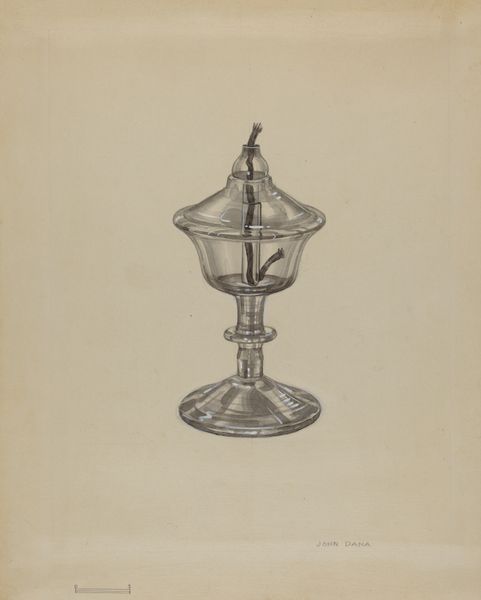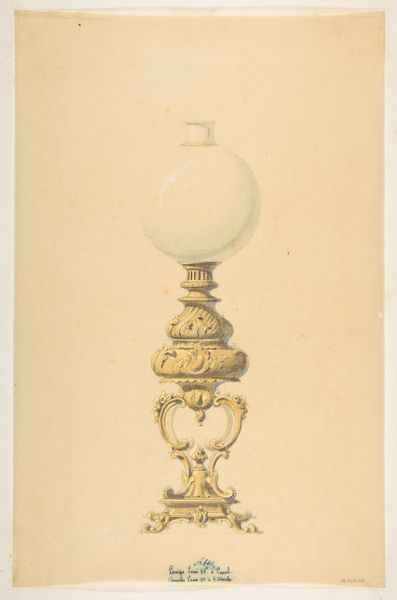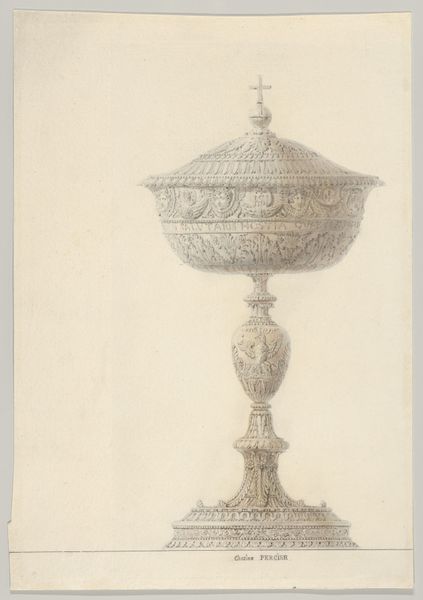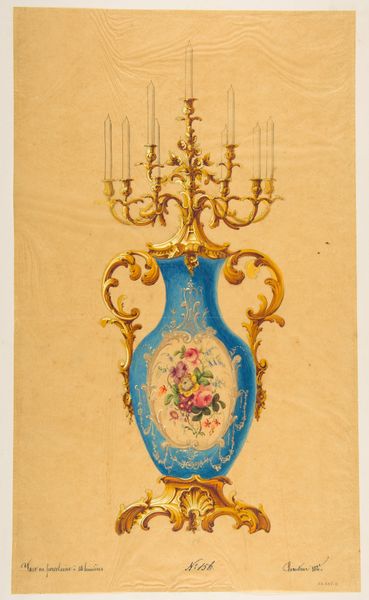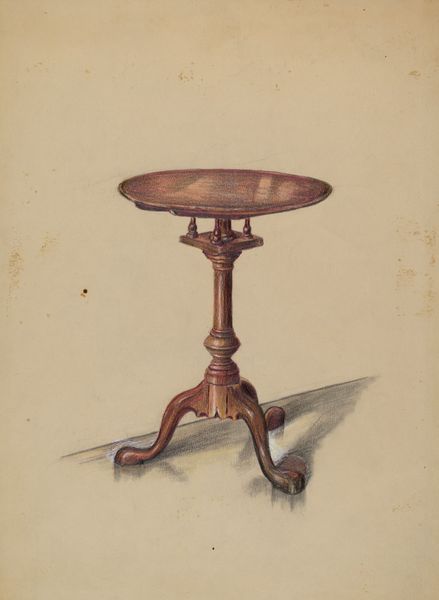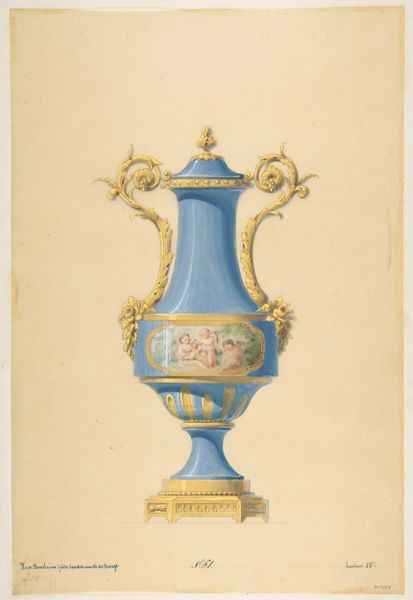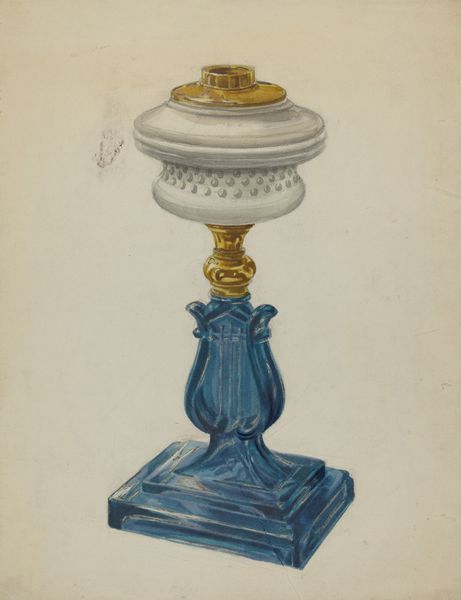
Design for a Round Porcelain Table with Polished Bronze 19th century
0:00
0:00
drawing, coloured-pencil, print, watercolor
#
drawing
#
coloured-pencil
#
water colours
# print
#
watercolor
#
coloured pencil
Dimensions: sheet: 14 15/16 x 10 11/16 in. (37.9 x 27.2 cm)
Copyright: Public Domain
Curator: Oh, what a delightful daydream of elegance. I'm just smitten with this 19th-century design drawing. Editor: It's certainly… decorative. What exactly are we looking at? Curator: Well, according to the museum, this piece, known as "Design for a Round Porcelain Table with Polished Bronze," envisions precisely that: a table. Although it exists only on paper, it offers a fascinating insight into the opulence of the era. Someone imagined this, felt this piece come into being... it's like peeking into a gilded fantasy. Editor: I see it more as an artifact of excessive consumption, to be honest. A porcelain table with bronze embellishments—who needs that? But, thinking about its historical context, the 19th century was a time of intense industrial expansion, with a burgeoning middle class eager to display their newfound wealth. Pieces like this became symbols of status and aspiration, reinforcing existing class structures. Curator: True, but aren’t dreams also important? Someone dreamed this up. What did they dream of, I wonder. To me it exudes pure playful, luxurious beauty. Editor: And who had access to that luxury? Who was excluded from the dream? That level of intricate detail and artistry required labor—labor often exploited during that era. We can't just admire the pretty picture without acknowledging the socioeconomic forces that made its creation possible. Curator: Hmm, perhaps we are both right in a way, and there’s space enough for multiple points of view. But the use of watercolor and colored pencil here is truly magical, though, right? Editor: The rendering itself is skilled; there's no doubt about that. The way the artist captures the potential gleam of the bronze and the smooth surface of the porcelain speaks to their craft. And of course, it reflects the European aristocracy that has often failed to provide any value to humanity. Curator: Perhaps, yes... and it brings things full circle for us now to look with new eyes on all art from the past! Editor: Indeed, we need these conversations. Art, even seemingly frivolous decorative arts, can be a powerful lens for understanding and critiquing the societies that produced them. It calls for sustained reflection!
Comments
No comments
Be the first to comment and join the conversation on the ultimate creative platform.
